|
|
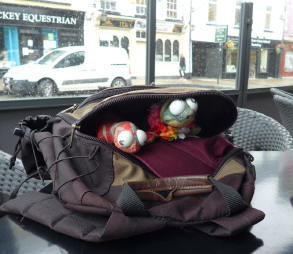 |
Ireland
2016 |
 |
(Most all pictures are are linked to
a larger size - click to view), Hotel links open in new tab
Much of the information on this site came from the DK Eyewitness Travel
2016 Book
top
 
Tidbits From the Trip: A
Collection:The Republic of Ireland
is different from Northern Ireland - they have two different
countries governing them. We traveled the east to west staying in
the middle part of the Republic of Ireland.
We also put together a list of "You Know
You
Are In Ireland When ..."
- The sun is out and it's raining.
- The locals tell you that they hope you
didn't come for a tan.
- YouTube videos tell you to remember that
when driving, you need to keep our wife in the bushes (or
gutters).
- All car mirrors fold back. (Corollary, most
left side mirrors feel the pain of DuckTape)
- The corners are wider than the roads.
(Corollary, you can see your own tail lights as you go around some
of them.)
- You never have to say, "Lets get up early
to start while it is still cool outside."
- Like deer in Virginia, if you see one
bicycle on those narrow roads, there is another in the area.
- In an elevator, the 0 floor button is the
ground floor - the first floor is our second floor.
- A GPS is essential, as is a map, and
printed route from Google maps. (Wife input ... not so much.)
|
top
 
Day 1 & 2: Dublin - Arrive 5:30am - Taxi to hotel
Blooms Hotel
After arriving in Dublin at 5:30 in the morning, we got to the hotel
by taxi and dropped our bags in their locker. Then we started
investigating the city before it was even awake. With the threat of
rain tomorrow, we set off for the places that would be a long walk
or outdoors. However, we had to wait over 4 hours before the first
place opened.
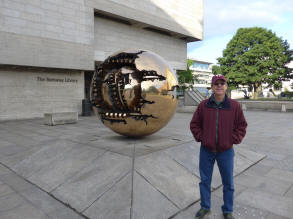
We went to walk the campus of Trinity College. The Sphere
Within a Sphere was delightful.
|
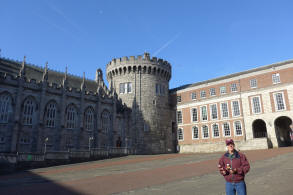
There was no one around - peace and quiet. The round building
is the record tower 1226 - the oldest part. |
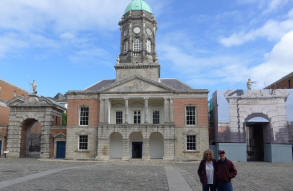
Across the courtyard looking to the
Bedford Tower. |
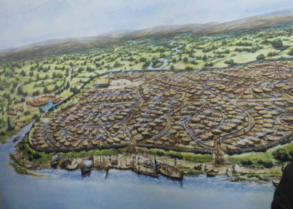
Old Dublin around 800 with no castle and thatched style
houses. The Vikings controlled the town at this time.
Anglo-Normans are the descendants of the
French from Normandy that conquered England in 1066. |
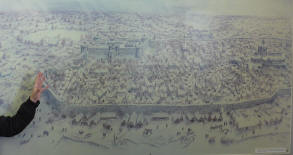
A later version around the 1200s where the castle is stone
at the top left of the picture.
During these times the Irish were not
allowed to sleep inside the Dublin walls - they could work
there during the day, but had to leave at night - they weren't
trusted to stay. Also, the Gaelic
Irish were not protected
under Norman-Saxon laws. They could be killed with no
punishment
to the English person. Inside the cities and fort
the world was like being in England - outside
and in the
countryside, it remained Irish.
|
Strongbow came from England with soldiers
that were organized, had chain-mail, lances,
and other
equipment and skills the native Irish
and Vikings had not
seen. He quickly took over the southern part of Ireland. When
King Henry II heard that Strongbow was calling himself the
ruler of the area, the King put together an army
of his own,
put Strongbow in his place, and headed north to take Dublin.
The Irish chieftains and Vikings submitted full to King Henry
II in
1169. To keep control, the the King handed
great tracks
of land to rich and loyal friends
who began building the
castles all over Ireland. The Norman-Saxons were fully in
control and
would remain so until 1922.
Hugh Delacey was given a bunch of land
to the north of Dublin as a balance to the power of Strongbow.
Delacey was to keep the King informed and the people loyal. To
do this, he
built the Trim Castle - one of the first to and
largest in Ireland.
|
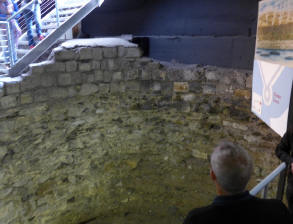
Remains under the Treasury Building of the Powder Tower With
incredibly thick walls. |
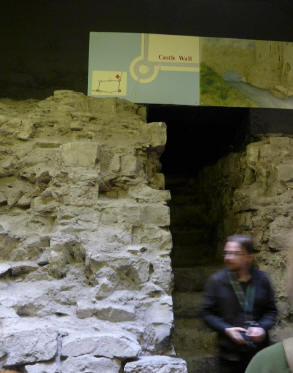
Stairs leading to and from the docks.
|
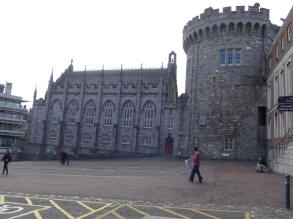
The Chapel Royal attached to the Record Tower was completed in
1814 as a neogothic church. |
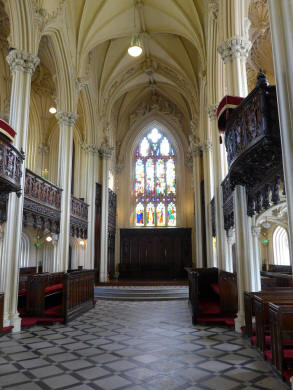
Inside the Chapel Royal. The first Lord-Lieutenant's presiding
seat is on the right. His name is carved into it so that all
the others to follow him would have the rest of the audience
looking at and remembering his name not the current
occupant's. |
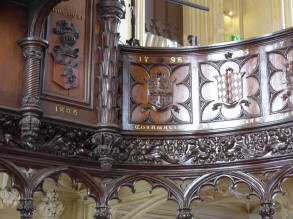
Cornwallis Lord-Lieutenant of Ireland with name cared into the
paneling of the Chapel Royal. Cornwallis surrendered to
Washington during the Revolutionary War. Some said that he was
sent to Ireland as punishment for losing the war. The Chapel
was used in the Tutors, including the trial of Thomas Moore. |
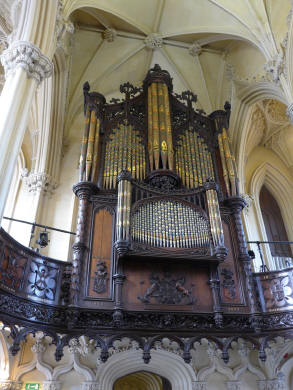
The organ in the Chapel. |
|
To the right is the Throne Room where King
George IV sat in 1821. He was so large that he made a massive
throne ("wide as he was tall"). Later a diminutive Queen
needed to add a stool so her feet wouldn't dangle. |
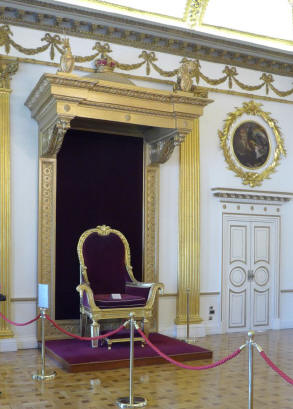 |
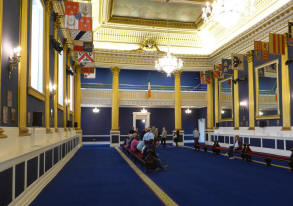
St. Patrick's hall (the patient Saint of Ireland).
The banners were from the Knights of St. Patrick. |
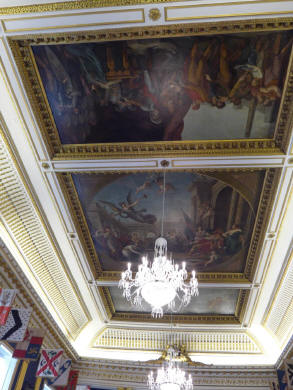
The ceiling paintings depict the relationship between Britain
and Ireland (late 1780's). One panel shows the Irish
surrendering to the Norman-Saxons. |
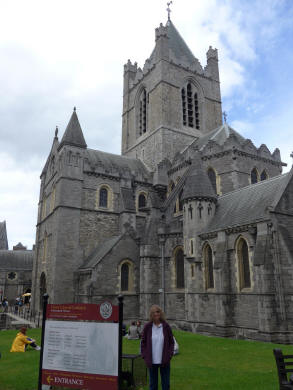
Christ Church Cathedral rebuilt in 1186. |
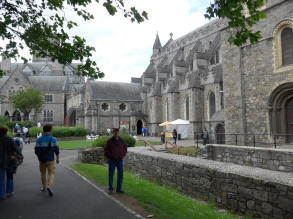
The tomb of Strongbow is located here
(1176). He started the invasion of Ireland and was captured in
1170.
|
|
As always, we lit a candle for those we
love and lost. This year we lit one for Herby French, Amy's
sister's father-in-law. |
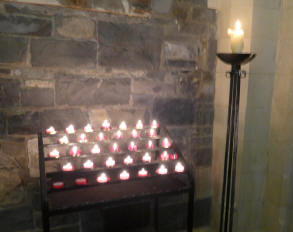 |
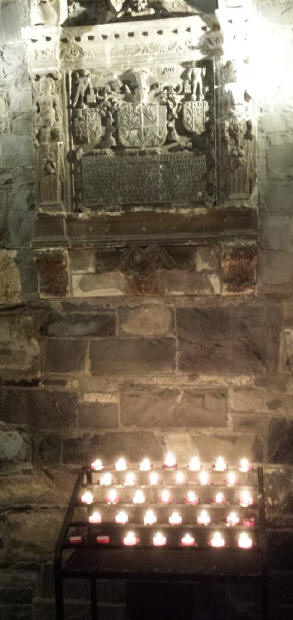 |
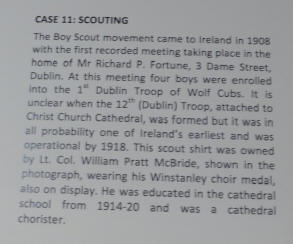 |
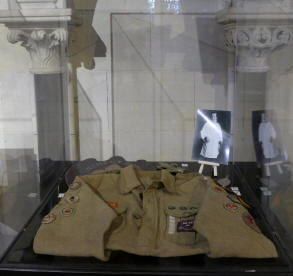
|
1908 Boy Scout uniform |
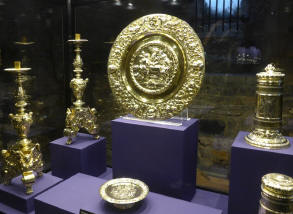
Religious artifacts
|
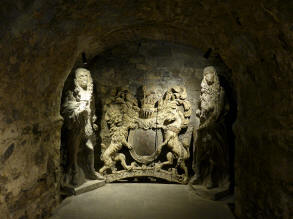
From the crypts |
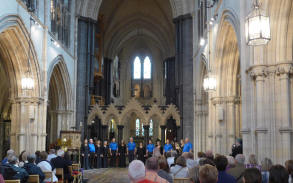
A group from New Mexico was singing beautiful gothic music |
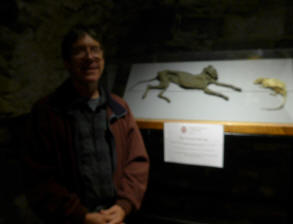 |
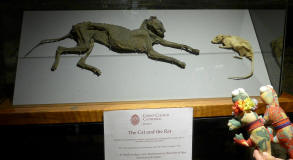 |
The mummified Cat and the Rat were found in
an organ pipe in the late 1850's.
"...The duo is affectionately
named Tom and Jerry and even got a mention in James Joyce’s novel
Finnegan’s Wake".
http://www.irelandtravelkit.com/the-mummified-cat-and-rat-of-christ-church-cathedral-dublin-co-dublin/
|
|
|
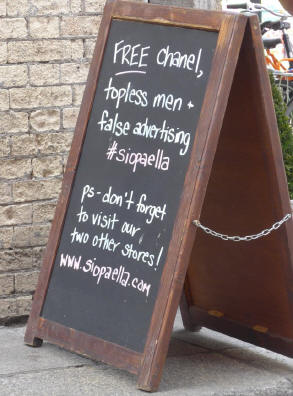 |
|
|
top
 
Day 3: Dublin
Blooms Hotel
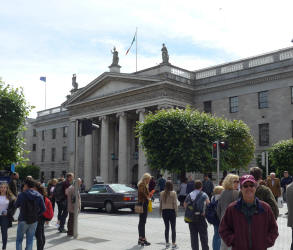
Easter rebellion (1916) at the Post
Office which gave the Irish Republic its independence from the
United Kingdom.
See more info in picture to right. |
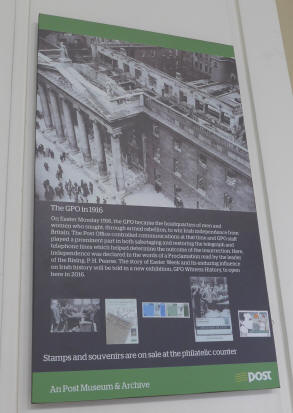 |
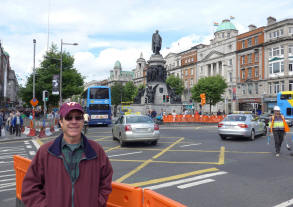
The monument to Daniel O'Connell
(1775-1847) - the
the “Liberator”.
The road works in the background are
connecting the trains from one end of the city to the other.
They built two sections but never connected them. Now they are
trying. |
| |
|
|
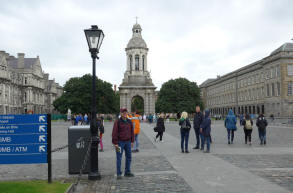
Back at the Trinity college, we were headed to see the Book of
Kells.
It is a medieval, illuminated manuscript
of the gospels - over a 1000 years old. It is associated with
the monistic island of Iona and was probably produced around
806 AD. After attacks on the Iona monastery, it traveled to
Dublin and then was moved to the Trinity College in 1661.
|
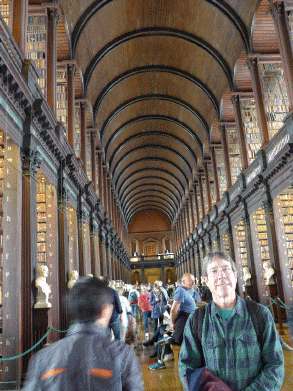
Afterwards we went to tour the Long Room
in the Old Library.
|
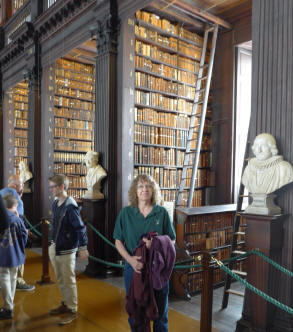
It is about 200 feet long and holding
200,000
of the oldest books and was built between 1712 and 1732. |
 |
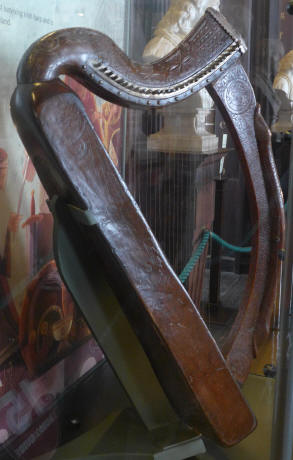
|
This is the oldest surviving harp in
Ireland.
In 1896, Guinness copyrighted their harp
symbol which was based on this harp.
When Ireland wanted to adopt the harp as
their national symbol, they had to turn the harp around (the
flat sounding board to the right). |
National Archeology Museum
|
|
The floor of the National Museum was
beautiful.
Lavish mosaics everywhere. |
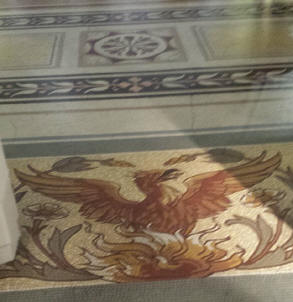 |
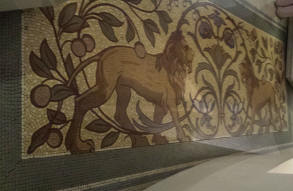 |
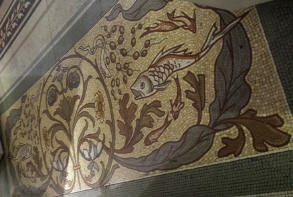 |
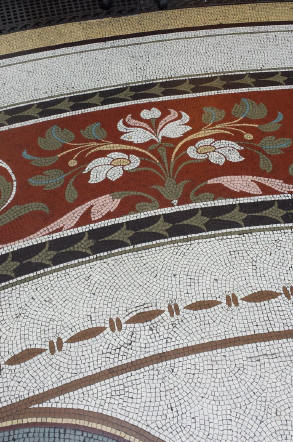 |
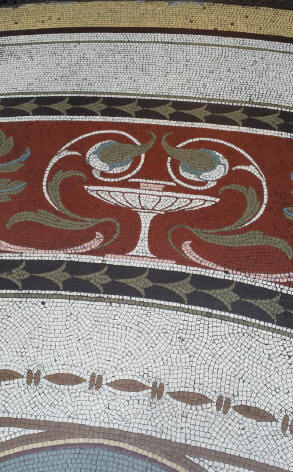 |
 |
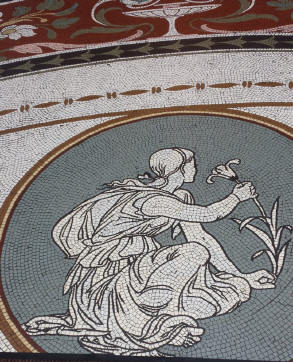
|
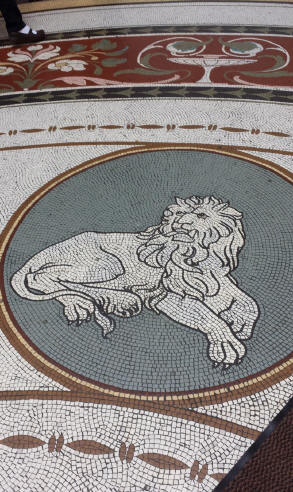 |
|
|
Bog bodies have been found all over
Europe. They date from 400 BC to 400 AD and all were "put to
death is a brutal fashion". (From information to right.) |
 |
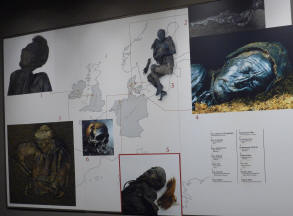
Famous bog bodies and
where they were found. |
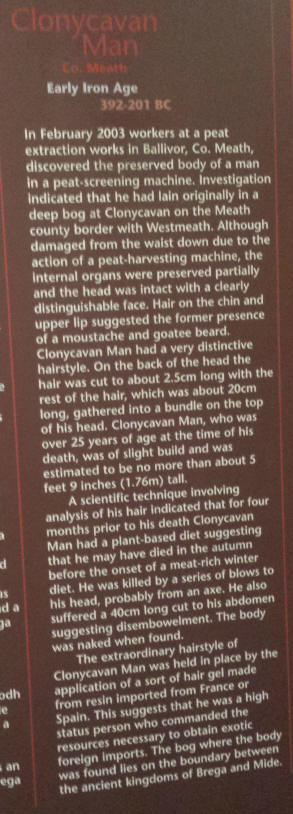
|
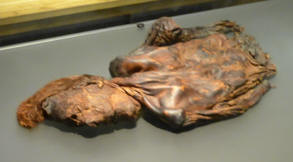
Clonycavan Man 391-201 BC
See full info to left.
Clonycavan Man was found in 2003 after a
bog cutting machine dug him up (which did some obvious
damage). With hair and organs well preserved, a reconstruction
of what he may have looked like is on the right. |
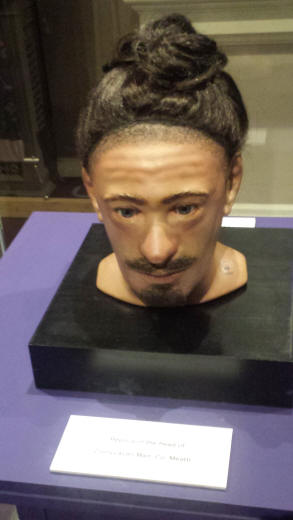 |

|
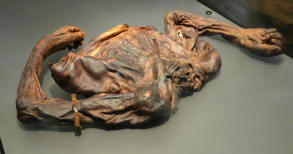
Oldcroghan Man 362-175 BC
See full info to left - they are a bit
gruesome,
so reader beware.
Discovered in 2003, he was approximately
25 years old, muscular, and tall. |
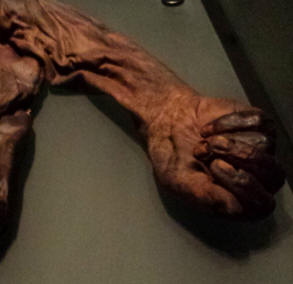 |
|
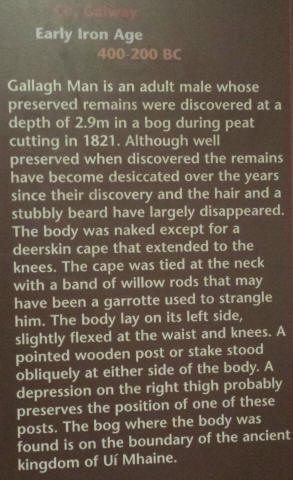 |
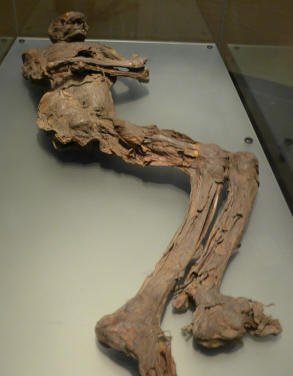
Gallagh Man 200-400 BC
See full info to the left.
Found in1821, the body was naked covered
only in a deerskin cape. The body has deteriorated over the
years. He was probably strangled.
|
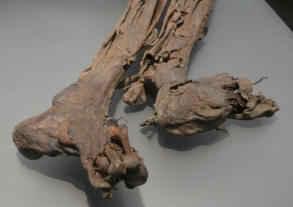 |
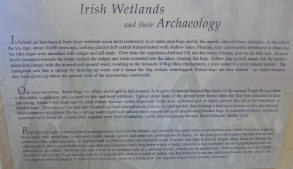
Above: Irish Wetlands and their Archeology
On right: shoes and tools of the past
|
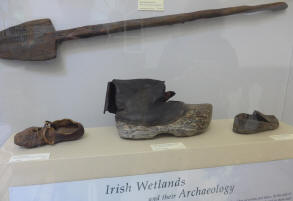 |
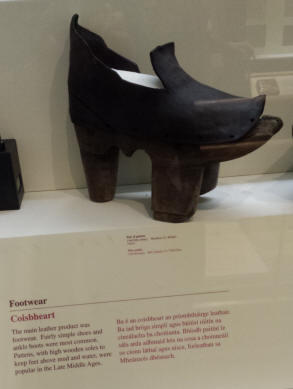 |
|
These clothes were also found in the bogs
.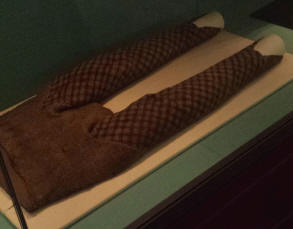
|
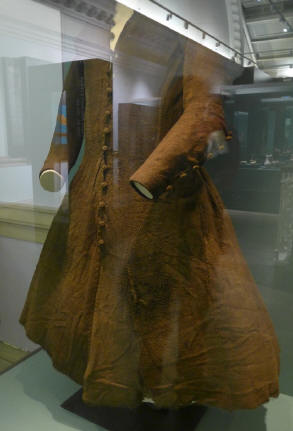 |
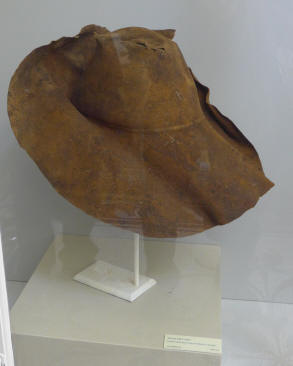 |
|
"Buzz Bones"
Made from pig's toe bones these were
probably children's toys. The cord threaded through the
middle, twisted, and when pulled, would make a buzzing sound.
|
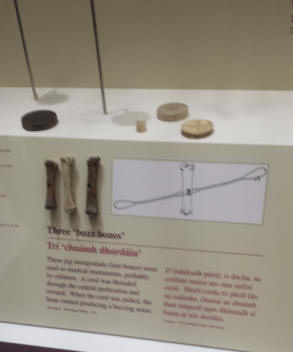 |
|
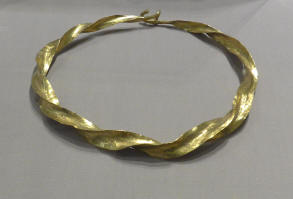 |
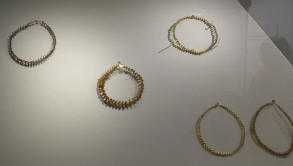 |
Gold necklaces and arm bands with
a twisted design we have never seen on our travels. |
|
All museums have their Egypt section. We
had never seen a mummy like this one. It probably dates to the
2nd or 3rd century AD when the Roman influence was firmly in
place. |
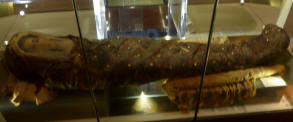 |
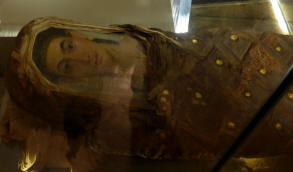 |
|
top
 
Day 4: Lv Dublin - Drive to Kilkenny Castle
then stay night at
Kilkenny Ormonde Hotel
Bob was getting use to driving on the left, and Amy was getting use
to sitting on the left. Our trip would initially take us on big
roads (like our interstates) and as we traveled, we would be
encountering smaller and smaller roads. A good plan - it worked for
us. :)
|
top
 
Day 5: Lv Kilkenny - Drive to Rock of Cashel
then stay night at
Baileys Hotel
|
top
 
Day 6: Lv Cashel - Drive to Doolin, See Cliffs of Moher
then stay night at
St. Anthony's B&B
|
On our drive we decided
to fill the gas tank and were lucky enough to do that at a gas
station that housed a Subway sandwich shop. We intended to
picnic at the cliffs enjoying the views. And then Ireland's
weather did what it does best ... changed in a heartbeat. The
tell tale signs were the dark clouds, the pouring rain, and
the hordes of people running to their cars. Our picnic was
happily dry and in the car in the parking lot. Within half and
hour, the skies cleared and the rain became just a drizzle -
and off we went!
The cliffs rise to 702
feet and run down the Atlantic Ocean for 5 mile miles. Birds
fly the cliffs, above and below, in an incredible dance.
It was beautiful! |
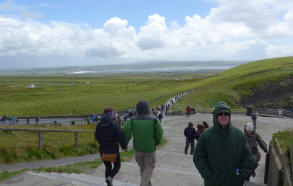 |
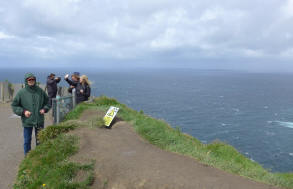 |
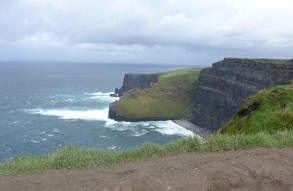 |
|
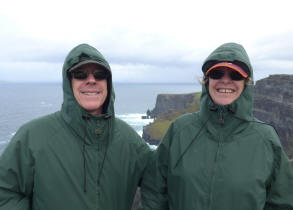
The Cliffs of Moher rise 690 feet out of
the sea and extend for 5 miles. |
 |
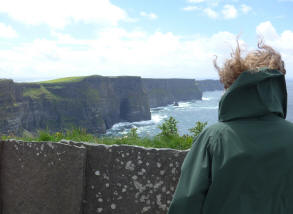
We had 60 miles an hour winds which made
it so much fun to walk around in - and, no, we did not get
close to the edges! |
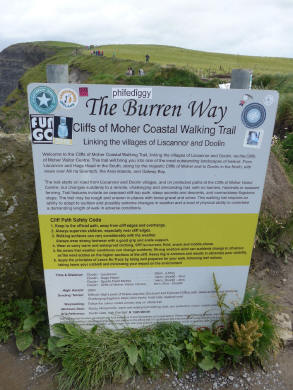 |
|
|
The Burren is an extraordinarily stony
area of Ireland. After we left the cliffs, we took Little
Brutus through the Burren and over scary little back roads to
the ancient portal tomb. Little Brutus was named after our big
car we drove to Dad's in 2008.
|
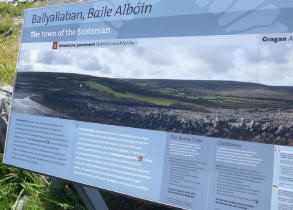 |
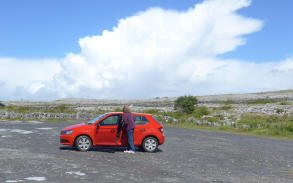 |
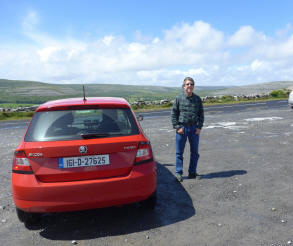 |
|
|
The portal tomb of Pounabrone - another
adventure on the smallest roads we had driven.
The archeologist have discovered 600
years of burials, dating between 3800-3200 BC. |
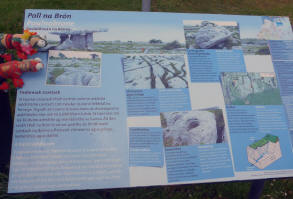 |
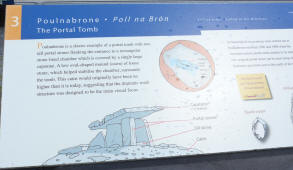 |
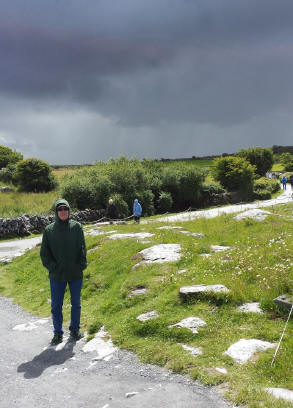 |
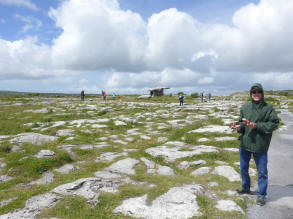
Oh yea - did we say the weather changes in
a heartbeat? These photos were taken about 15 minutes apart.
Yup! |
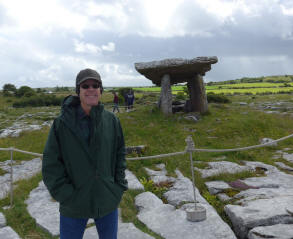
The Portal Tomb |
|
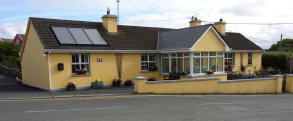
St. Anthony's B&B
Such a perfect location!!!
And such a perfect place! |
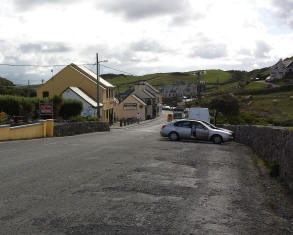
How beautiful! and relaxing! |

The cows doing the same |
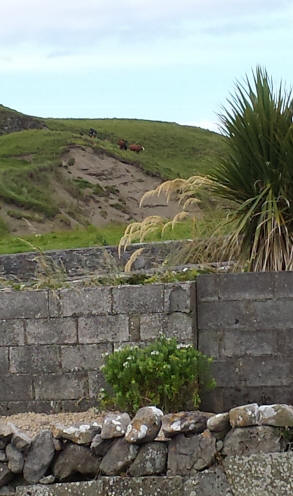 |
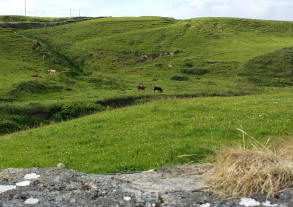 |
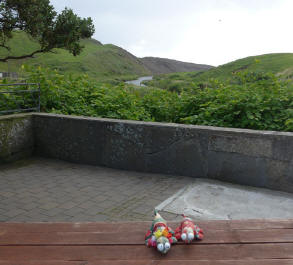 |
|
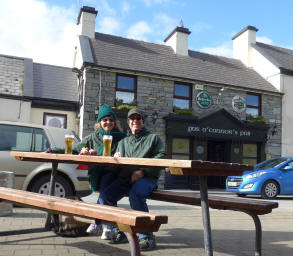 |
After checking into St. Anthony's in Doolen
(a few buildings up the way),
we head down to the
Gus O'Conner's Pub for a pint (or two).
After enjoying the outside, we went in
for dinner. We were told that we just went to the bar and told
them our table number and they would start a tab for us. Cool.
So we sat down at wonderful table off to the side and back.
We couldn't believe it - our table was
number 33 - and today was our 33rd anniversary. Amy's mom sent
along a bit of money to celebrate our anniversary (love her -
she always does). This year we used it to buy a bottle of red
wine in three different cities! This was our first bottle!
|
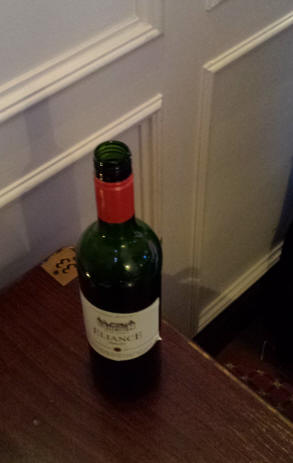 |
| |
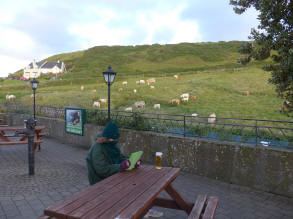
Amy bought herself a green knitted hat and scarf - the first
time she wrapped up in it was to read her book that evening.
|
|
|
top
 
Day 7:
Aran Island - Inis Mor - Day trip, boat ride
Doolin2Aran Ferries
St. Anthony's B&B
We were very lucky. The boats to the
islands did not run the day before our scheduled trip. Anyone
who had spent the night on the islands, got an unscheduled two
night stay since the ferries could not get there to pick them
up.
|
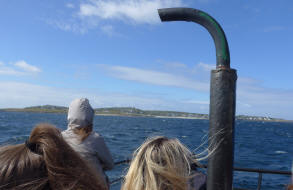
It was rock and roll for the first bit, but settled down as we
left the port. |
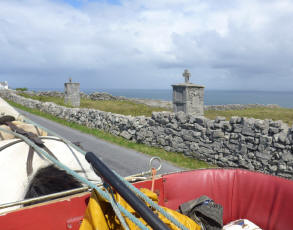
We got off the ferry and immediately met
a man driving a trap and pony rental.
|

Notice Amy's knitted cap! |
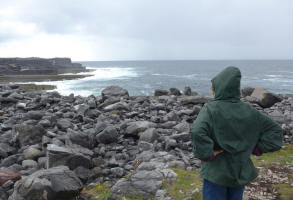
So he asked us if we like to walk ... Well, Yea.
Little did we know....
Pretty streets that got smaller and smaller,
down to country tracks.
Then, "Lets go see this, just follow me on foot." |
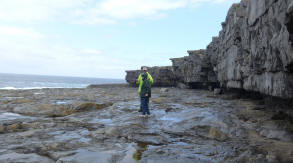
Really? Yea, Bob knew that we would be
walking over a boulder fields (like the Burren), then rocky,
watery flats, to get to the Worm Hole.
He forgot to tell me, Kini, or Kimi that we
were hiking to see the Worm Hole or Serpent's Lair.
RedBull participants dive from 27 meters
(3 times Olympic height), into a sea fed and enclosed area of
water.
RedBull
Atlantic Way
|
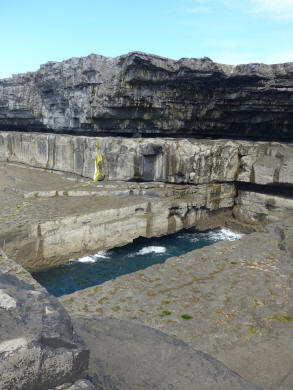 |
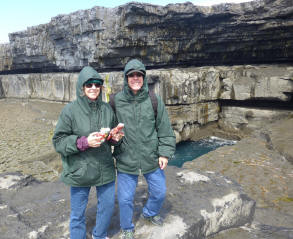 |
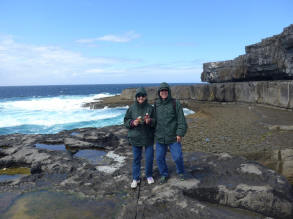 |
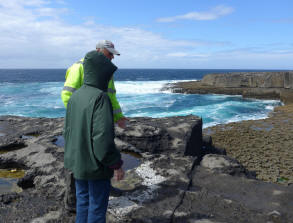 |
|
The way back was just as beautiful and just
as treacherous. |
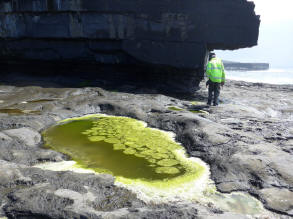 |
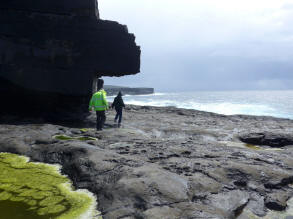 |
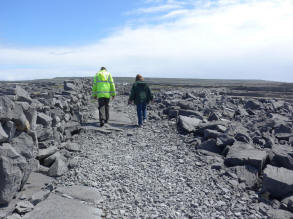 |
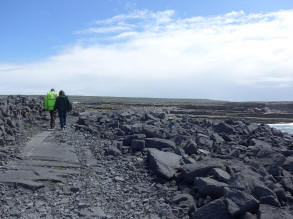 |
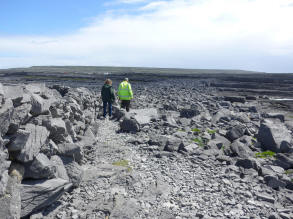 |
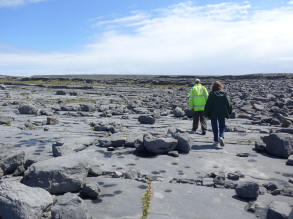 |
 |
Our pony and trap ride took us through the
countryside to end up at Dun Aonghasa - the ancient ringed
fort.
We saw multiple walls and plots that
belong to the past and present land owners. |
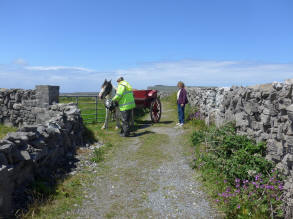 |
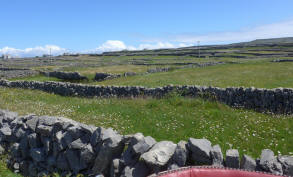 |
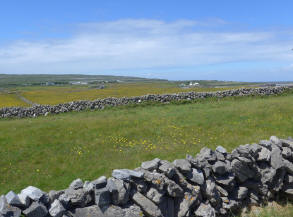 |
 |
Dun Aonghasa
"A 14 acre site the fort consists of
three terraced walls surrounding an inner enclosure containing
a platform on the edge of a three hundred foot high cliff. The
views from it are breathtakingly spectacular. Excavations
carried out in the 1990s indicated that people had been living
at the hill top from c.1500 BC with the first walls and
dwelling houses being erected c.1100 BC. A remarkable network
of defensive stones known as a Chevaux de Frise (c.700bc)
surrounds the whole structure."
Quoted from |
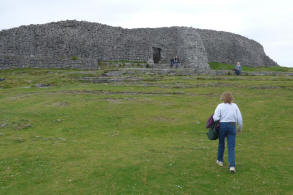 |
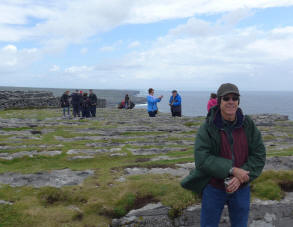 |
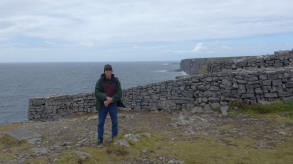 |
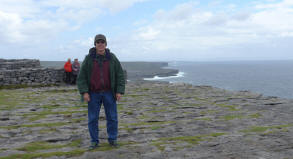 |
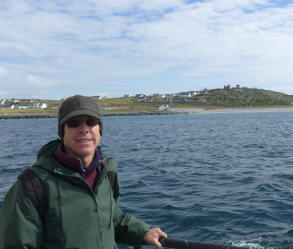 |
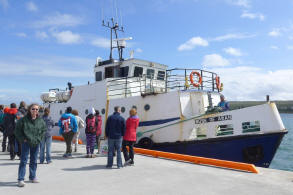
Our ferry and ride home |
|
top
 
Day 8: Lv Doolin - On drive to Donore, see Trim Castle
Dalys Inn
Part of Braveheart was filmed at Trim Castle.
|
|
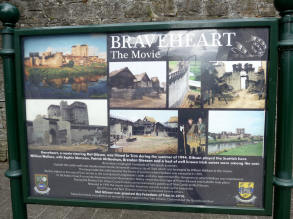 |
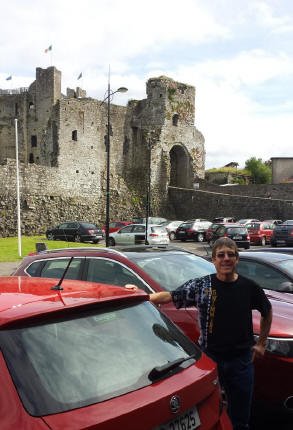 |
Hugh Delacey
built Trim Castle in the 12th century. The first part of the
castle was wood and stone with a stone wall around it. Once
the area was secured, they started to build the Keep - the
building in the center. Over hundreds of years the surrounding
wall was built and modified. Trim castle was whitewashed with
a lime based paint. It made the rooms brightened and the lime
kept down disease.
The stairs
spiraled upwards and to the right. This means that attackers
coming up the stairs would not be able to use their sword in
their right hand. And, all swordsmen were right handed
- none were left handed. Also, there was a trip step
every few steps. It was a different height or width to trip up
attackers |
|
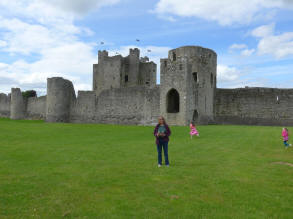 |
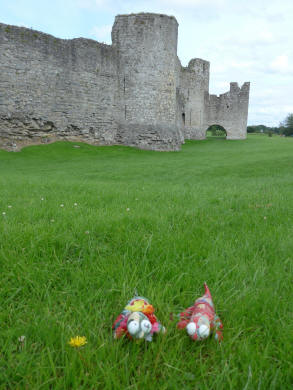 |
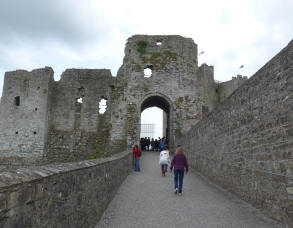 |
|
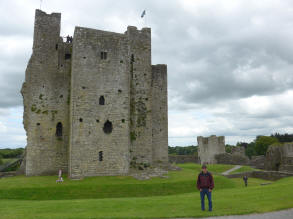
For the first time, rainwater
from the roof of the Kepp was collected and stored. |
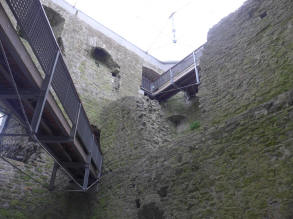 |
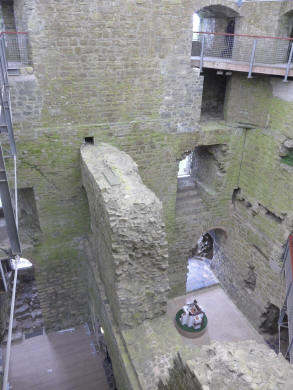 |
|
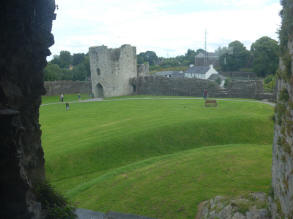 |
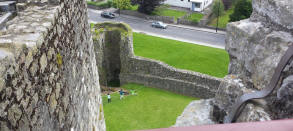 |
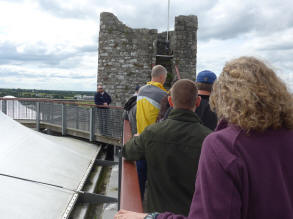 |
| |
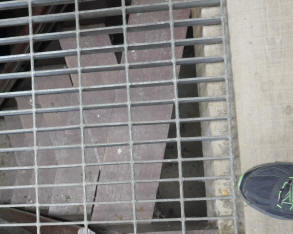 |
|
|
|
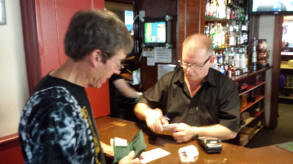 |
We checked into our hotel ...
at the bar, no less. While sitting outside, two locals showed up
with their horses and wagons that took tourists around town.
Fantastic fellows - like them
even better when the first pint of beer they got was fed to the
horses! |
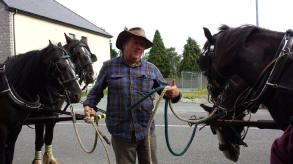 |
|
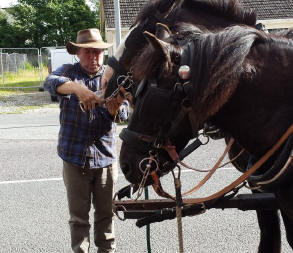
|
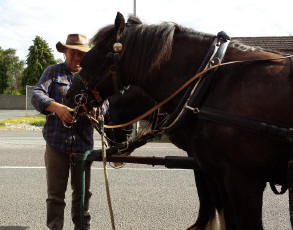 |
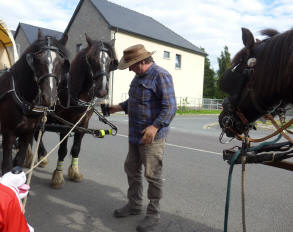 |
|
top
 
Day 9: See
Brú na Bóinne, Newgrange and Knowth
Lv Donore - Drive to Laytown
then stay night at
Tara House
(on the beach)
This area is in the Boyne Valley - the place
of the Boyne family/dinasty in the
|
Knowth (pronounced no-th) -
Built around 3,000BC, it is
1,000 years older than Stonehenge in England,
and 500 years older than the Great Pyramids of Giza in Egypt.
A written virtual tour can be
read here -
section 1,
section 2,
section 3 |
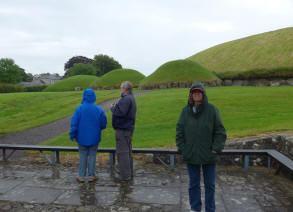
The largest passage tomb (on the right) is
40 feet high and 220 feet in diameter , had two passageways,
and has 18 satellite tombs. |
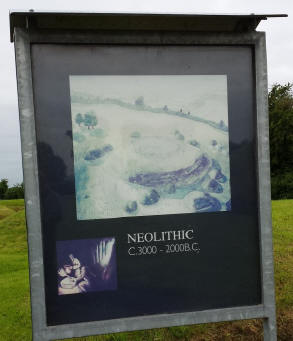 |
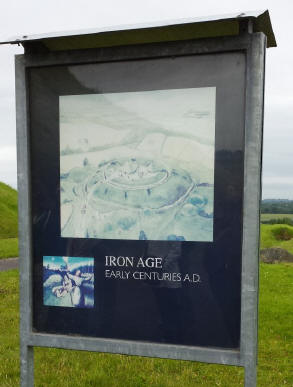 |
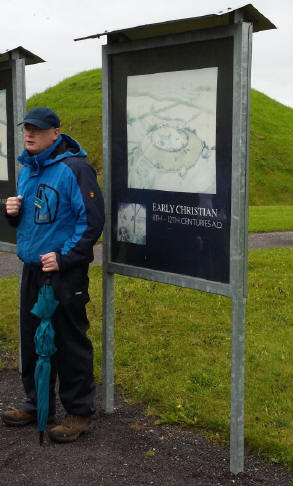 |
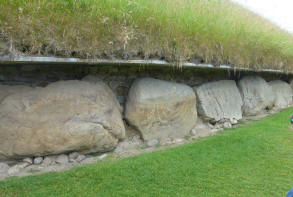
There are 127 kerbstones, carved with
Neolithic art, that surround the mound on the outside.
Most are geometric designs. |
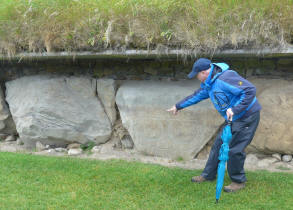
One of the more famous ones is the
kerbstone 15 -
the sundial or lunar calendar stone. |
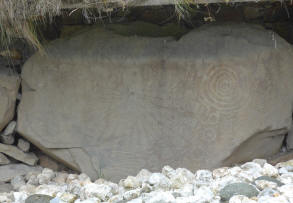 |
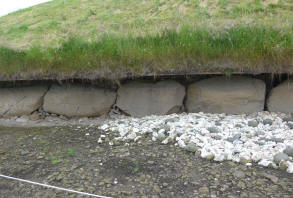 |
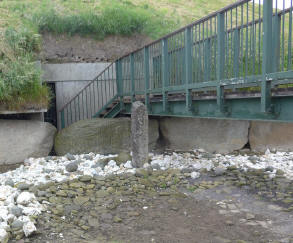 |
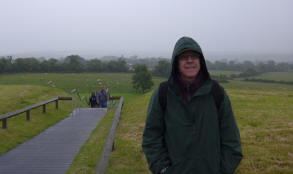 |
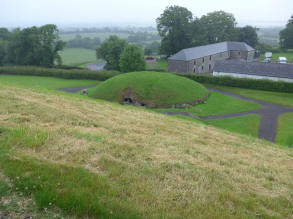
A satellite tomb
|
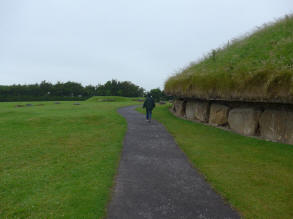 |
Newgrange - slightly
"newer" than Knowth at 3,200 to 2,500 BC
"The Megalithic Passage Tomb at
Newgrange was built about 3200 BC. The kidney shaped mound
covers an area of over one acre and is surrounded by 97
kerbstones, some of which are richly decorated with megalithic
art. The 19 meter long inner passage leads to a cruciform
chamber with a corbelled roof. It is estimated that the
construction of the Passage Tomb at Newgrange would have taken
a work force of 300 at least 20 years.
The passage and chamber of Newgrange are
illuminated by the winter solstice sunrise. A shaft of
sunlight shines through the roof box over the entrance and
penetrates the passage to light up the chamber. The dramatic
event lasts for 17 minutes at dawn on the Winter Solstice and
for a few mornings either side of the Winter Solstice."
from http://www.knowth.com/newgrange.htm
|
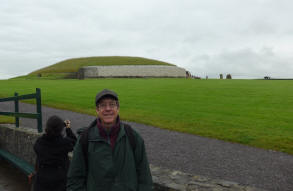 |
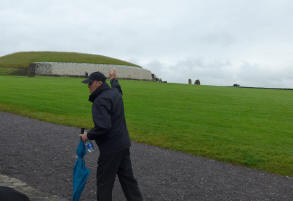 |
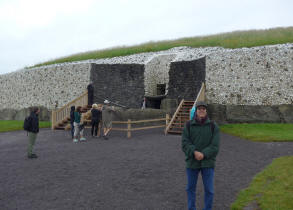
The stone front was recreated in the best
scientific estimates of the rocks found around the site.
|
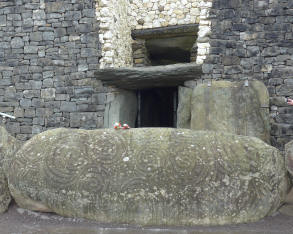
The best known kerbstone sits at the
entrance. It is carved with multiple spiral designs. |

The "roof box" over the entrance allows the
sun to enter the passage tomb on the Winter Solstice. |
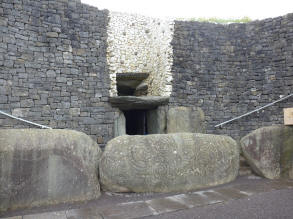
While inside they have a light show that
recreates what it would look like as the light enters the
tomb. There is a lottery you can sign up for to be able to
experience it on the actual day.
|
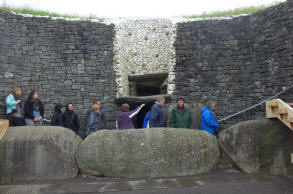
We were not allowed to take pictures
inside, so here is
a link to the corbeled ceiling (a method of stacking
stones). It was so well done, that it has never had a leak in
all its centuries. |
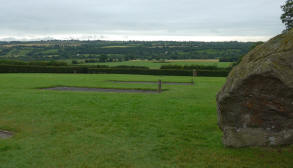
|
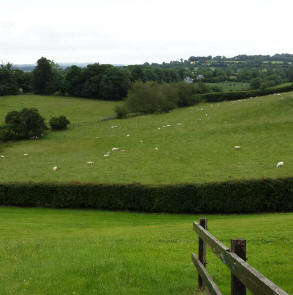
Sheep - again! |
|
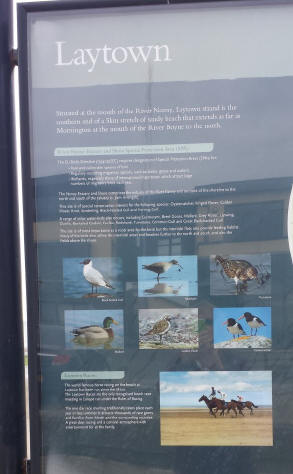 |
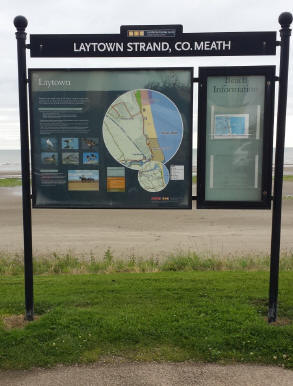 |
A few minutes away was Laytown and the
Tara House
- our hotel on the beach. We had some fun
finding it as there was a road rally being held so they
blocked off some of those itty-bitty streets we needed.
As the sign says, Laytown is known for
their
annual horse race on the beach. |
|
So, Laytown rolls up the streets on a
Monday - when we happened to be there - so we had to walk
about a mile to Bettystown.
A beer on the way (half way, actually)
with the best labels we have ever read! |
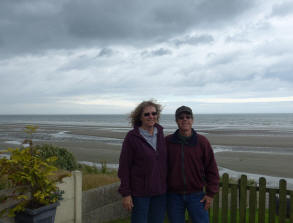 |
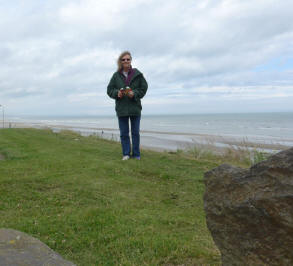 |
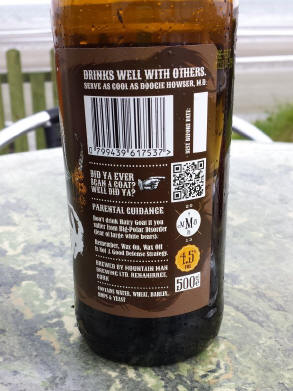 |
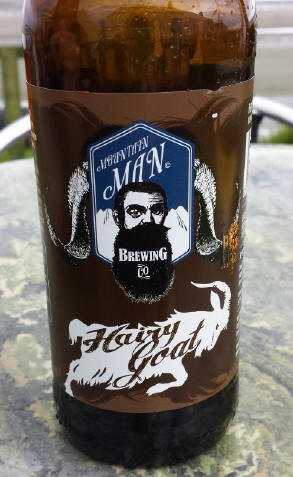 |
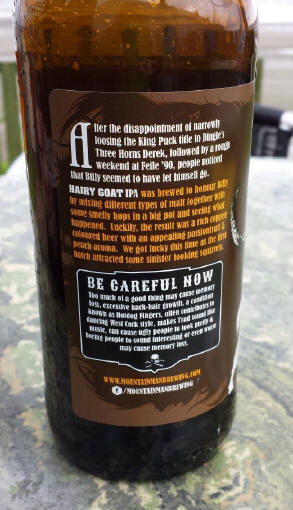 |
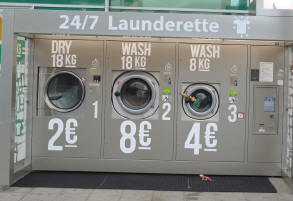
A new laundry mat machine that held much
controversy in the town. This is it and it was located outside
of the supermarket under a little plexiglass housing. Stuff
your clothes in, money, lock the front and turn on, then run
back across the street for a beer. Repeat the process to use
the drier.
The tricky part?
Remembering to look at your watch! |
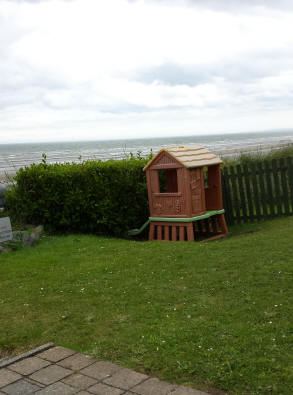
Loved this play house. The slide ends into
what looks like a little hedge. This is Ireland ... it is
covered in greenery, there is a stone wall under it. Ouch! |
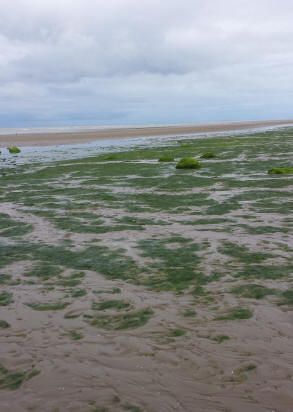
When we got back to the hotel, the tide was
out - waaaay out.
So we picked up a few bottles of beer
and went for a walk. |
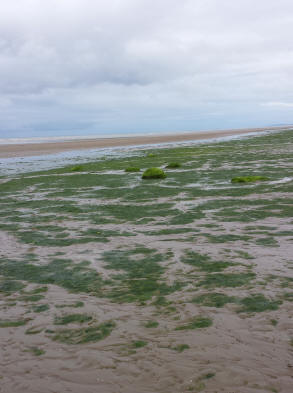 |
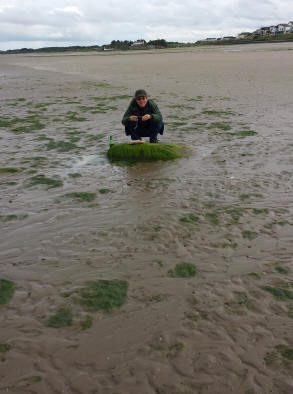 |
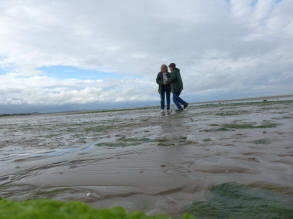
There was nobody around, so we had to try
to
take a few shots on our own using the timer. |
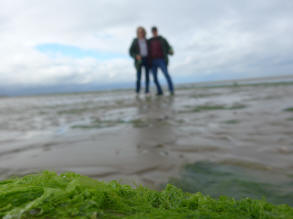 |
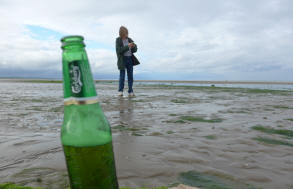 |
|
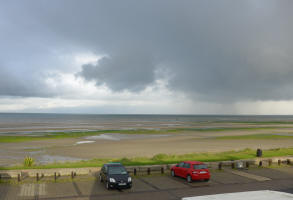 |
You could see for miles and the storms
(thankfully) stayed out to sea.
But afterwards, ahhhh ... the rainbows!
Below and to the right is a picture in
the morning of a horse and rider tromping down the beach.
|
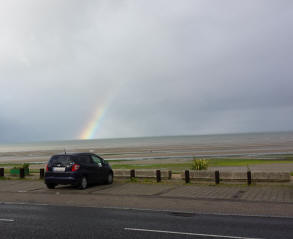 |
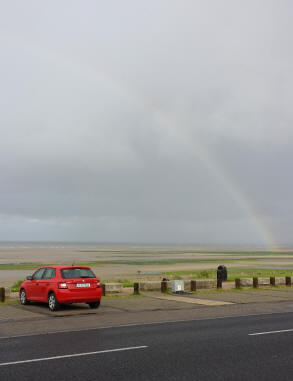 |
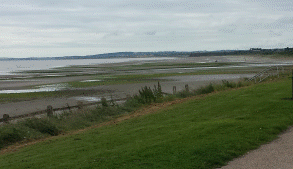
|
|
top
 
Day 10: Lv Laytown - Slow drive to Dublin - See Malahide Castle
- turn in car
Harding Hotel
Malahide Castle |
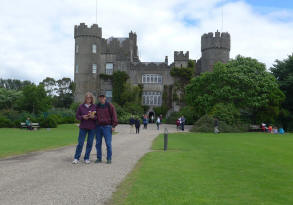 |
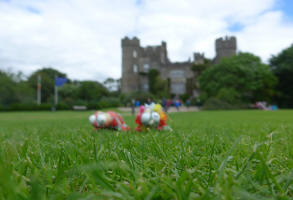 |
It was the home to the Talbot family for
800 years. It was built in 1185, the only time the Talbots
were not in residence was for the 11 years from
1649-1660 when Oliver Cromwell gave it to Miles Corbet after
the wars Cromwell won in Ireland.
The towers on the corners had little
rooms that were used from writing rooms to wardrobe rooms -
unique!
Men and women had separate bedrooms they
could use. |
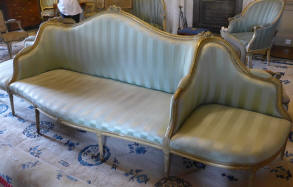
A Courting Couch
The couple would sit in the middle
section while the two chaperones (one for the male and one for
the female) would sit at the end seats. They could overhear
the conversations, but seem as though they were intruding.
|
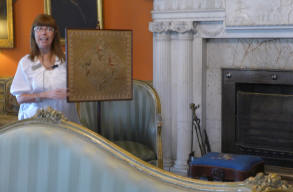
The Fire Screen
See info on right |
We were told that the movable fire
screen of this century were put in front of fireplaces so that
they would deflect the direct heat of the fire when women sat
in front of them. Servants would adjust the screens so that
the heat would not
melt the ladies' heavily waxed makeup.
"M'lady, do not lose face." "Mind your
beeswax."
Great story, just not so sure of its
accuracy.
See
#1,
#2,
#3
Indeed, it seems that the heavy white
pastes they used were not waxed based but were lead based -
killing them slowly
for the fashion of the day.
|

Info on the battle of the Boyne |
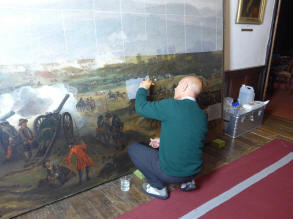
There was work being done to preserve the
painting.
|
After our visit, we headed to the airport
in Dublin
to return the car. Only took one wrong turn, so stopped at a
gas station to
get our bearings again.
We took a taxi into town again and
checked
into our final hotel. |
|
top
 
top
 
Day 12 & 13: Taxi to airport - airplane leaves at a "civilized
hour"
Av Greensboro and drive homeWe left
the Dublin around 1:00 pm, giving us a great chance to sleep in and
repack - a first.
Aer Lingus was great and we no problems with any of the flights.
The drive home was long (two hours), but it saved us money and
provided a good flight plan. The dogs and mom were fine.
|
top
 
|